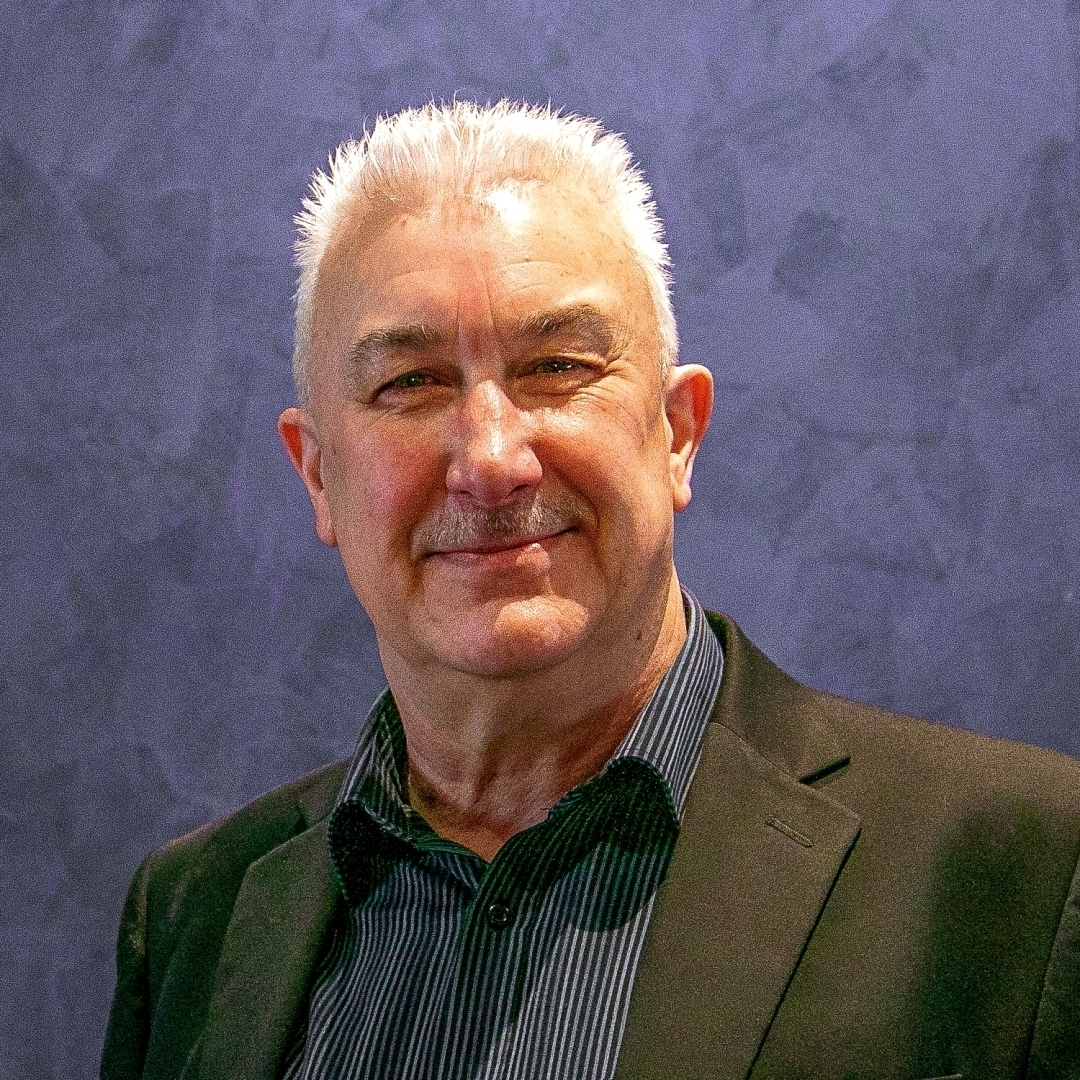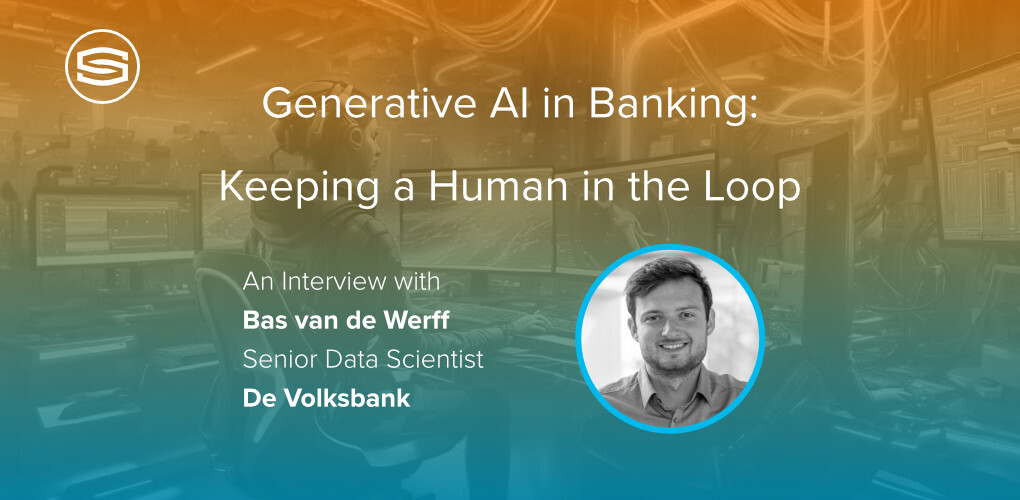
Insights & Opinions
Generative AI in Banking: Keeping a Human in the Loop
Mon, 22 Apr 2024


There is no escaping the topic of Generative Artificial Intelligence (GenAI) right now – from almost daily analyst reports to speakers at events and of course the overnight experts on social media, it seems everyone is talking about it.
But what are they actually doing with it?
And what are the opportunities and use cases in banking?
In our next series of interviews, we are speaking to bankers across the Benelux region to bring you insights, opinions, and food for thought with a distinctly local focus that is relevant to our community.
For the first of these, I sat down with Bas van de Werff, Senior Data Scientist at De Volksbank. To set the scene, I explained that my interest is specifically around GenAI as opposed to data & predictive analytics, robotic process automation or anything else that might previously have been labelled as artificial intelligence.
Think along the lines of ChatGPT, Bard, Co-Pilot and other emerging Large Language Models (LLMs) that can be applied to multiple different tasks.
Bas was quick to point out that at this point in time, the bank is firmly in the experimental phase and taking a curious and cautious approach with the technology.
“What we are doing now is experimenting. We've got some AI teams in the bank and specifically the AI team I'm from is in the customer interface area, where we see many possible applications for generative AI, so we set up a multidisciplinary task force”.
I was pleasantly surprised to hear that there is a significant demand, and a flood of ideas, flowing from the business. This is clearly not a case of the IT department or a bunch of techies experimenting with technology for the fun of it!
“Basically, everyone very much wants their own internal ChatGPT”.
It goes without saying that in the light of potential security and customer data privacy violations, employee access to the publicly accessible platforms is blocked and steps have been taken to ensure that data remains within their organisation. However, in recognition of the potential of this technology, they have taken steps to increase employee awareness around the opportunities and risks associated with Generative AI by delivering hosted sessions, posting blogs, and installing a code of conduct on the topic.
By increasing AI literacy across its teams, upskilling employees and fostering an environment of learning and adaptation, the bank aims to unlock the full potential of Generative AI. This strategic focus not only prepares the organisation for future advancements but also ensures that future AI implementations are grounded in the bank's operational realities and customer service ethos.
Through this approach, Bas’s team have identified 4 specific use cases to explore:
Document retrieval
The highest demand is for an internal version of a “Chat GPT like” tool to streamline document retrieval and work instructions. The aim of this tool would be to facilitate quick access to pieces of information (e.g. “What certifications do I need for my role?” or “What should I do in this scenario?”), all of which are currently spread across multiple different documents, thereby enhancing employee efficiency.
Document summaries
The idea here is to use generative AI to summarise extensive texts, for example new regulations or legal documents, to provide concise overviews and actionable insights. Of course this would not replace the need for certain people and departments to read and understand the documents in depth, but it would make them more digestible to a wider audience that need to be aware of the highlights.
Bas also noted that it would be great to have automated meeting summaries that could be distributed to all participants immediately after the meeting along with the appropriate action points.
Enhancing customer interactions
This one is a progression of the last point above but applied to customer interactions – Bas’s team’s specific area of interest within the bank. The idea being that instead of an employee having to go through the full transcripts of a customer’s previous calls in order to understand their problem, they would have short, succinct summary of the call in bullet point format.
“We just want the most important points, such that if the customer calls again, you don't have to ask them their full story again as we already know what they told us last time”.
From my personal perspective, I hope this becomes standard practice across ALL companies (not just banks) in the future, as I get extremely frustrated when having to repeat the same thing over and over again each time I get a new customer service agent on the line for the same problem!
Here Bas gave a glimpse of what might come next once the basic building blocks are in place – real time customer service assistance. By feeding speech-to-text on a live call into Generative AI and having it analyse what is being said and then providing prompts and suggestions back to the customer agent in real time, they could really supercharge their customer service.
It's ambitious, and Bas noted that one of the biggest hurdles to overcome in achieving this ambition is infrastructure and scale related. As he stated:
“Most of these AI models that that you used in the bank previously were used to predict something, and that would run like once an hour, or once a day, or once a month.
Now you have a model that people want to ask questions to live. This could happen at any moment, and you need to have the availability for it”.
I found it interesting that at no point was Bas suggesting that (human) customer service agents would be replaced by Generative AI and I questioned him on this explicitly:
“We position ourselves as the bank for society and for the people and the environment. So naturally speaking, the people in the company have in their minds: ‘Okay, this is new technology and we shouldn't blindly create a chat bot that directly interacts directly with the user’. For the time being, we want a human in the loop at all times”.
I find this approach very reassuring, particularly given the recent Air Canada case where their chatbot gave a customer incorrect advice and they tried to claim in court that it was a separate legal entity, responsible for its own actions!
The final use case that Bas discussed was:
Coding assistant
Bas characterised the current typical developer approach to solving problems as:
“You go to the Internet, you Google a bit, and you find some stack overflow posts. You’re basically a professional Googler, right?”.
I had to laugh out loud at this comment, not because he was being rude to developers, but because I recognised this as my own personal approach! (Apologies to my fellow techies that might be reading this blog – but you know it’s true!).
Microsoft has already released a version of co-pilot that does this and there are many others on the market too. Bas sees this as a potential productivity booster that could make developers’ lives much easier in the future.
Conclusion
Bas’s exploration of Generative AI reveals a balanced approach between innovation and caution. By focusing on specific use cases that promise to enhance efficiency and customer service, his team is positioning itself to harness the benefits of AI while navigating the inherent challenges of new technology adoption. As Generative AI continues to evolve, their journey offers valuable insights into how banks can strategically explore AI to improve operations and customer experiences, setting a precedent for thoughtful innovation in the banking sector.
To wrap up, I leave the last words from Bas to give you further food for thought:
“What I do see is that it looks like a technology that can make our lives a lot easier. And it sounds like you either adapt to it, or you become obsolete after a while”.
(Read the next article in the series here and download our white paper "Generative AI in Benelux Banking: Opportunities, Challenges and Future Outlook" for a consolidated collection of insights shared by Benelux bankers across 1:1 interviews, keynotes, panels and executive round tables we hosted)


